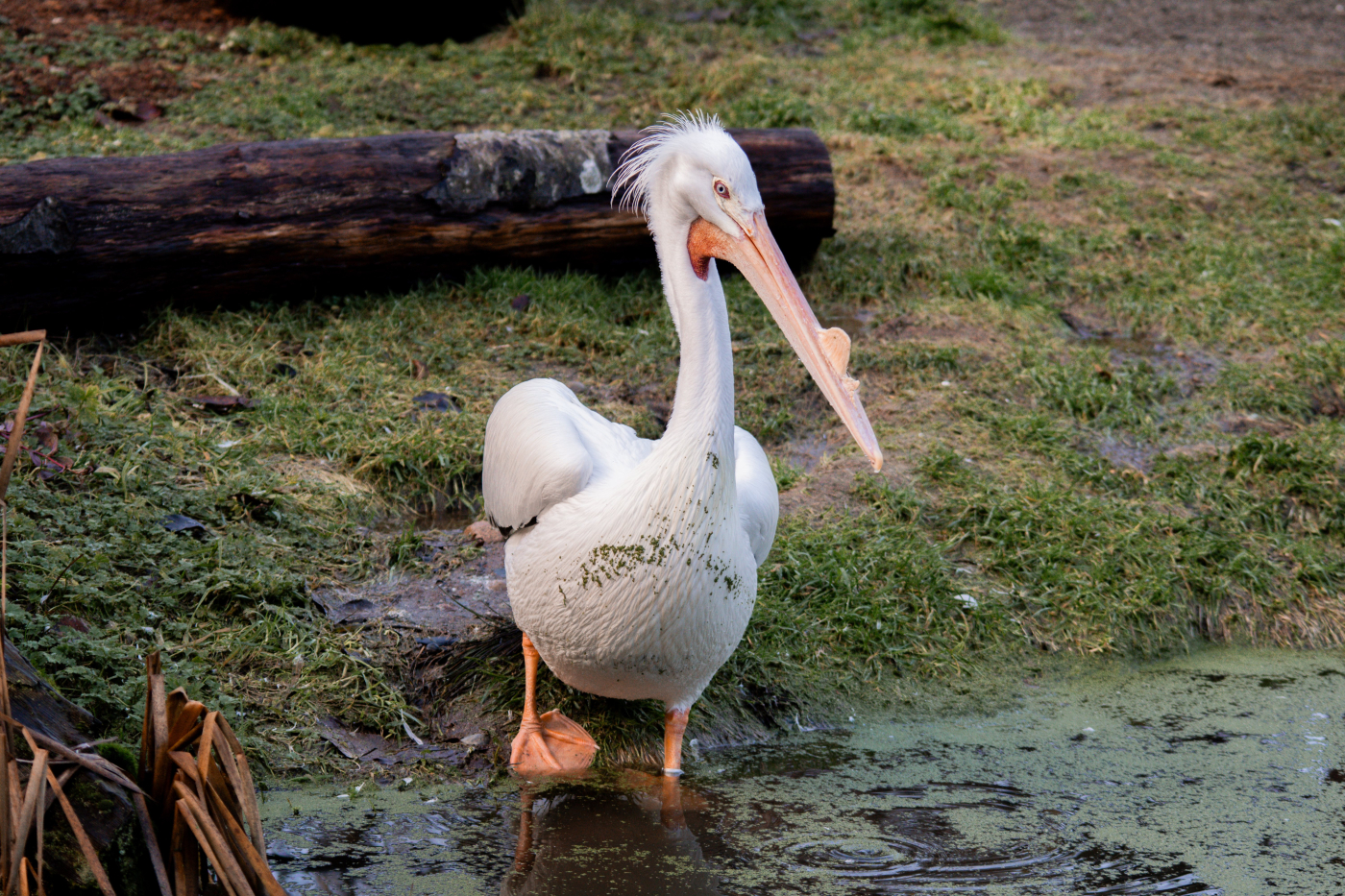Common name: American White Pelican
Scientific name: Pelecanus erythrorhynchos
Conservation Status: Least concern
At the zoo: A flock of 5 males - Gulliver (11y), Willy (10y), Hubba (14y), Lockport (10y), and Woodhouse (23y); you can find them in the northeast corner of the zoo by Conservation Corner (during the cold season they may be off display in their heated barn). These pelicans are all rescues who were injured in the wild and unable to recover fully.
Habitat:
Inland wetlands and marine coastlines
Diet: Fish, crustaceans, amphibians
Life Expectancy:
12 - 14 years
Biology:
American white pelicans are large, thick-bodied birds, mostly white with black primary and secondary feathers, yellow legs, bill, and gular pouch.
American white pelicans are found throughout North America, from northern Canada to the Caribbean. The majority spend the summer breeding season on northern inland lakes and wetlands, and winter on the southern coasts. Their main diet is fish and crustaceans, and they feed by scooping the live prey into their bill and gular pouch. They forage alone or in groups and cooperative foraging has been observed with groups driving prey into the shallows. They do not dive for fish like the brown pelican.
Conservation efforts have resulted in an increase in American white pelican populations in recent years. Destruction of wetland habitats remains their biggest threat.
Fun Fact:
Unlike the popular myth, pelicans never store food in their pouches. The gular pouch is used as a scooping tool only and whatever ends up inside is quickly swallowed.





